
THE PENNSYLVANIA RAILROAD had two major challenges: The Allegheny Mountains and a primary commodity of coal. This double-whammy resulted in some of the most impressive non-articulated steam locomotives ever developed. And rest assured, when the line found an engine that “worked,” it cranked out a ton of them. The I-class 2-10-0 Decapods are a case […]
Read More…

THERE ARE PLENTY of great-looking steamers on the market. Walk into any hobby shop and you’ll see row after row of these beauties. So amid a virtual sea of four-cylinder, huffing, puffing black giants, what can make another big engine stand out? Try mixing in a little color. MTH has modeled a brawny green champion […]
Read More…
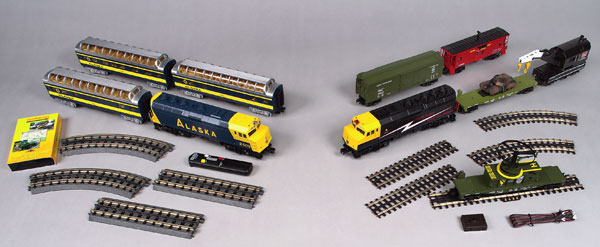
MTH IS OFFERING two starter sets that get away from the typical “seen-it-all-before” consists common in the field: the Alaska F40PH and US Army F40PH sets. North to Alaska This set models an Alaska Railroad rig that in reality is a red hot train for nature lovers and cruise ship passengers. In 1999, the railroad […]
Read More…

MY OFFICE WAS hotter than a jail cell in on the wrong side of the border. I sat in the dark with my .45 on my desk, enjoying a lively conversation with Misters Jack Daniels and Jim Beam. Then I heard it. That rumble, those voices. It was haunting. Almost like the faded memory of […]
Read More…
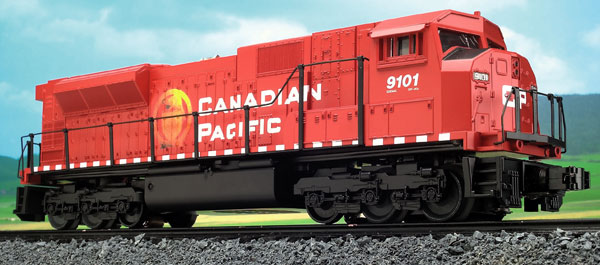
THE RAILKING SD90MAC is another one of those modern behemoths that tight-curve operators would never be able to run if MTH hadn’t hit it with the old Shrink Ray Gun. The RailKing SD90MAC measures 143/4 inches coupler to coupler, or 59 feet long in O scale. That’s a full five inches short compared to an […]
Read More…
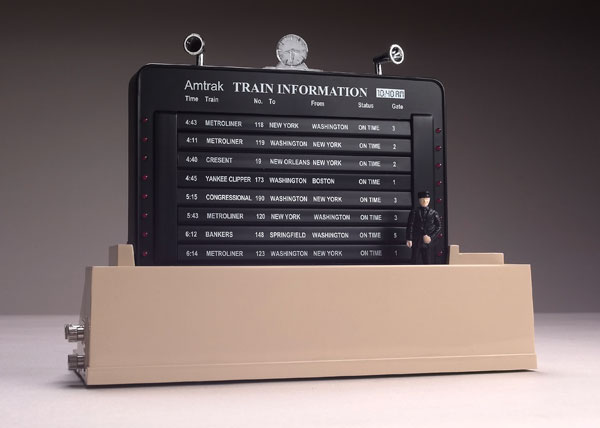
NOT SO LONG ago, crowds at passenger terminals flocked to the enormous automatic boards that informed them when trains were due to arrive and depart. The clicking sounds and illuminated names of crack trains and faraway cities added to the romance of railroading. The MTH no. 30-9022 Dispatch Board lets you add one of these […]
Read More…

LET’S FACE IT: Most U.S. railroad enthusiasts don’t know much about the railways or trains run by our Canadian cousins. This is unfortunate, since the railroad history of the Great White North is just as interesting as that of the Lower 48. Until recently, the major toy train manufacturers applied Canadian National and Canadian Pacific […]
Read More…

THE M-10000 UNION PACIFIC streamliner looks like something out of Astounding Science Fiction rather than the trade journal Railway Age. It was the first of the modern streamlined passenger trains, and its unique design, old enough today to qualify for full Social Security benefits, still stands out. Author Robert Reed, in The Streamline Era (Golden […]
Read More…
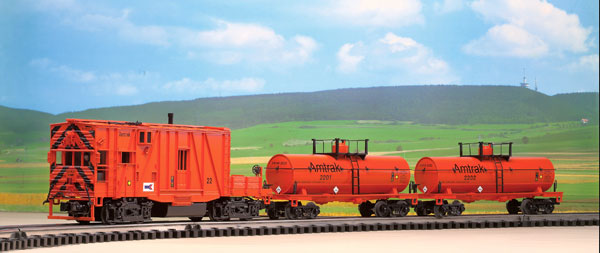
A COMMON, IF UNGLAMOROUS feature of prototype railroading is killing weeds, the eternal foe of good track and roadbed. I’ve seen this task handled by everything from crews walking alongside a hi-rail vehicle with spray tanks on their backs to railcars equipped with what looked like small flamethrowers. MTH’s Premier Line is first to offer […]
Read More…

WOW! MTH has raised the bar yet again for the level of detail on a die-cast metal steam locomotive. The MTH Y3 locomotive commemorates a notable U.S. Railway Administration standardized design from the World War I years made famous by the Norfolk & Western. In the article “The USRA 2-8-8-2” in the January 1985 issue […]
Read More…
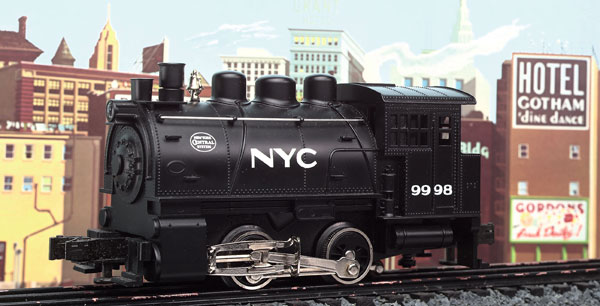
SOMEWHERE IN THE ANNALS of toy train history, a tiny celebrity steam engine got lost in the crowd. When it was found, it somehow got lost again. In 1999, MTH began producing an O gauge die-cast model based on the Baltimore & Ohio’s C-16 “Docksider” steam switcher. The biggest surprise was that this is a […]
Read More…
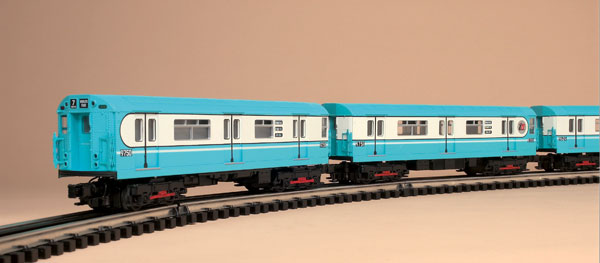
THANKS TO MTH, hobbyists around the country are coming up with clever ways to integrate subways and elevated transit lines into their layouts. The latest entry in the subway sweepstakes is a set of O gauge R-36 cars. The first of 424 of the eye-catching blue-and-white R-36 cars began arriving in New York City in […]
Read More…












